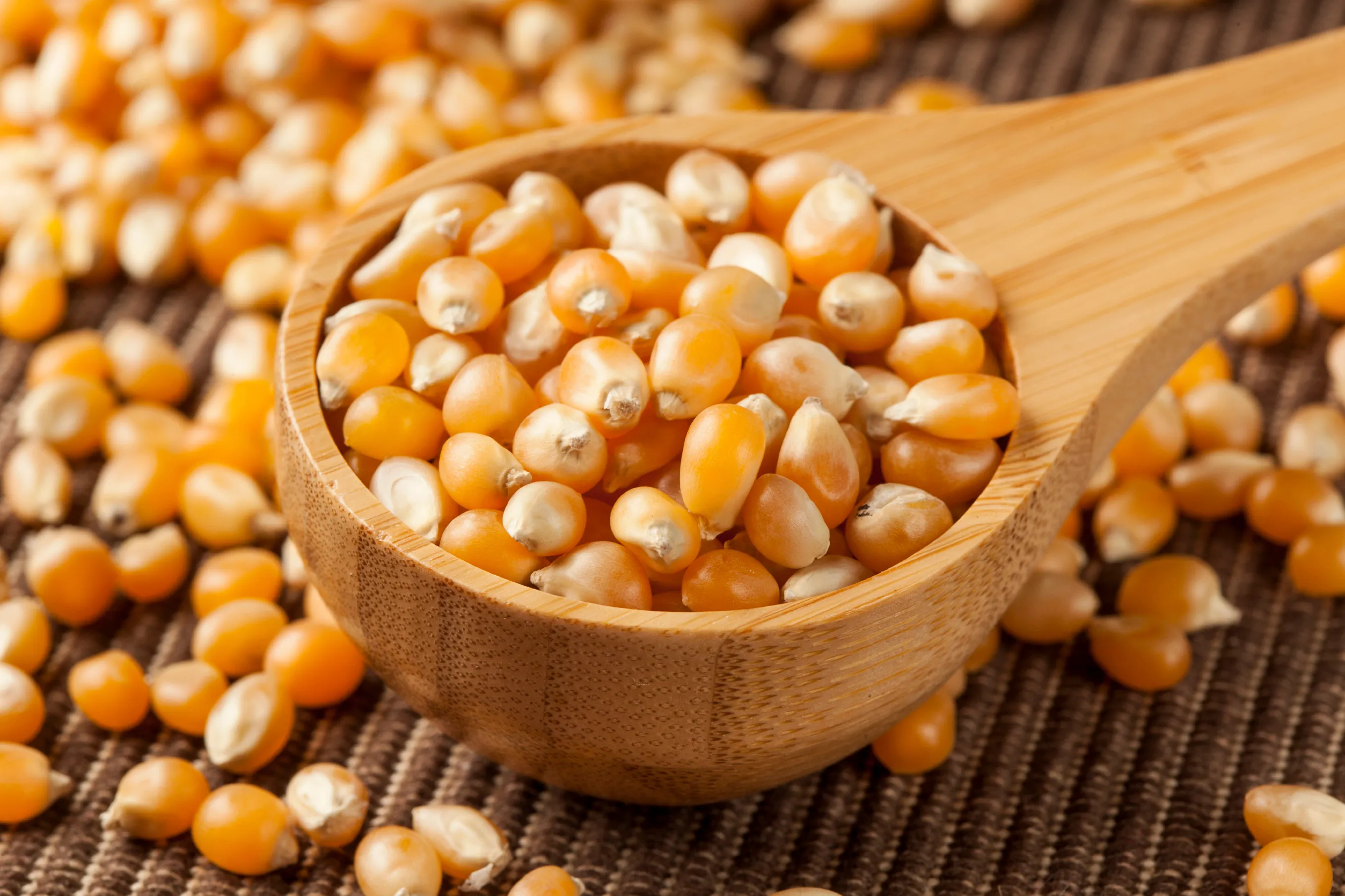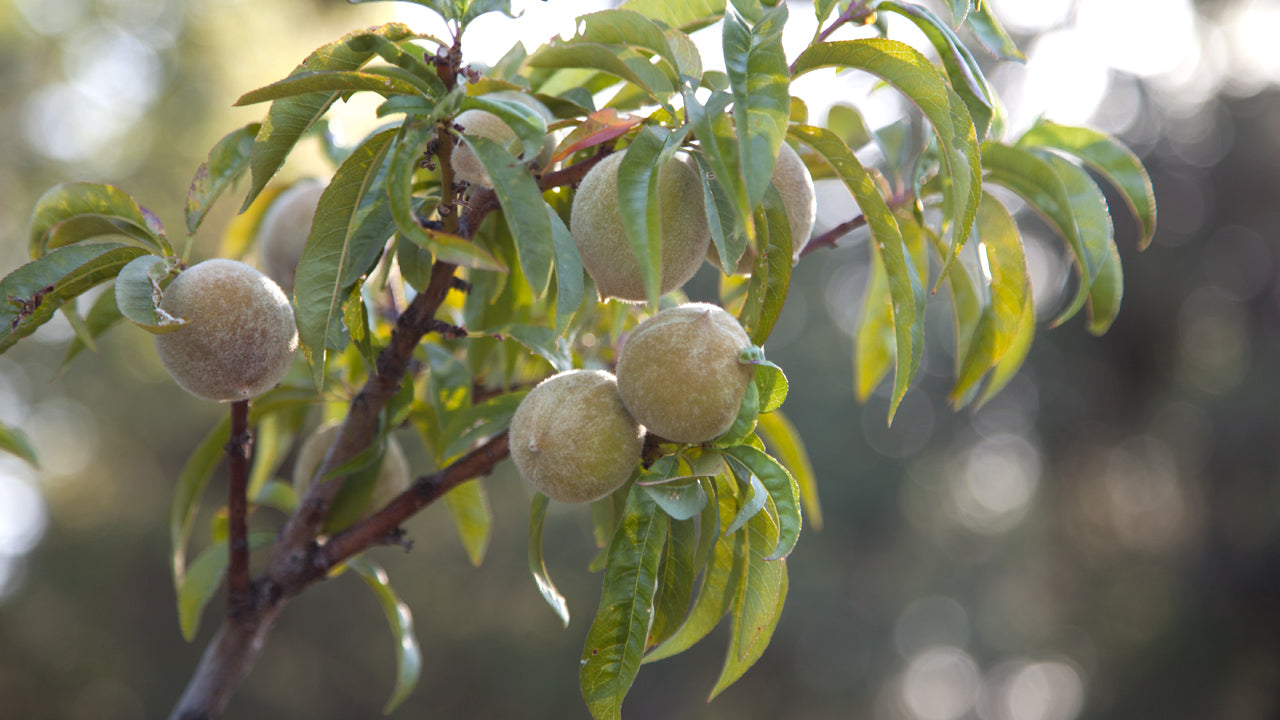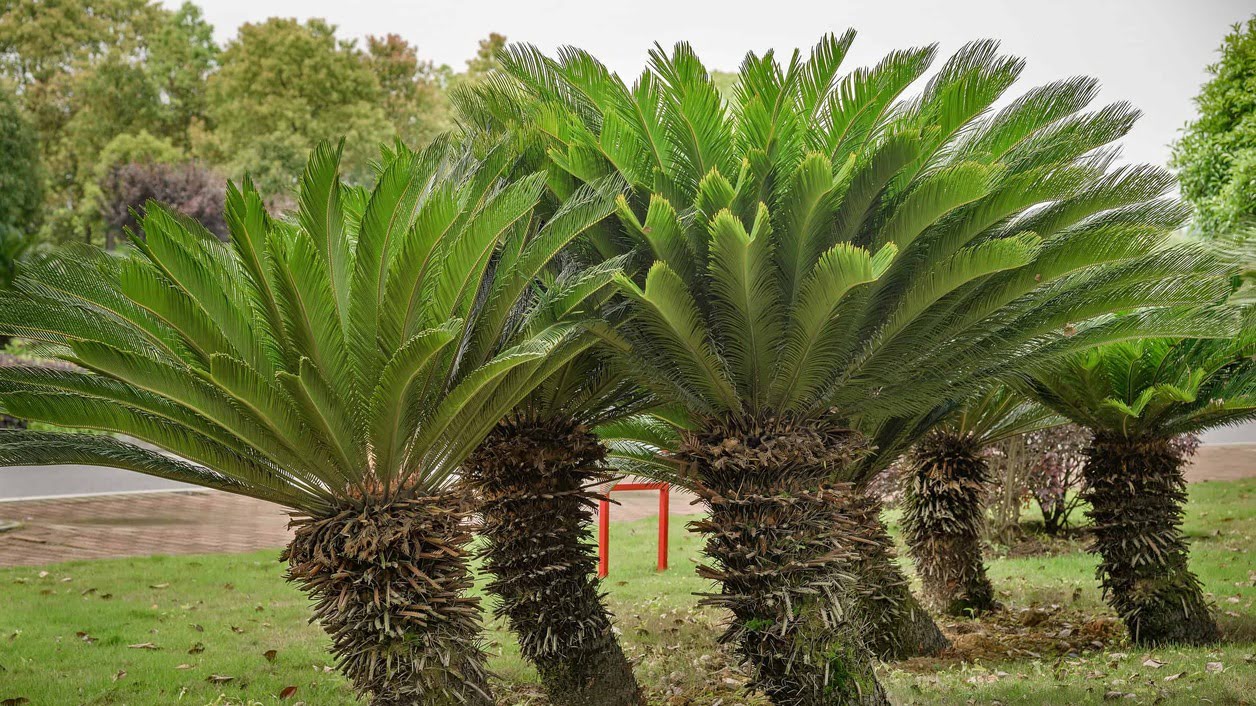Home>Gardening News and Trends>Latest News>What Fruit Comes From Palm Trees


Latest News
What Fruit Comes From Palm Trees
Published: October 31, 2023
Discover the latest news on what fruit comes from palm trees, including popular varieties and their uses. Stay informed with our comprehensive guide.
(Many of the links in this article redirect to a specific reviewed product. Your purchase of these products through affiliate links helps to generate commission for Chicagolandgardening.com, at no extra cost. Learn more)
Table of Contents
Introduction
Welcome to the fascinating world of palm trees and their delightful fruits. When we think of palm trees, we often envision their majestic presence swaying in tropical breezes, adding to the allure of sandy beaches and exotic landscapes. What many people may not realize is that palm trees not only provide aesthetic appeal but also bear delicious and nutritious fruits.
Palm trees belong to the family Arecaceae and are native to tropical and subtropical regions around the world. With over 2,500 species, palm trees come in various shapes and sizes, each with its unique characteristics. From the iconic coconut palm to the elegant royal palm, these trees are not only beautifying elements but also yield a wide range of tasty and versatile fruits.
In this article, we will explore the diverse types of palm trees and the fruits they produce. We will also delve into the most common palm tree fruit, dates, and shed light on other lesser-known palm tree fruits. Additionally, we will uncover the various uses and benefits of these fruits, from culinary applications to their medicinal properties.
Join us on this journey of discovery as we dive into the world of palm tree fruits and unravel their wonders.
Types of Palm Trees
Palm trees come in a wide array of species, each with its unique characteristics and fruit-bearing capabilities. Here are some of the most notable types of palm trees:
- Coconut Palm: The iconic coconut palm (Cocos nucifera) is synonymous with tropical beaches and refreshing coconut water. It is one of the most widely recognized palm trees, known for its tall trunk, feathery fronds, and large coconuts.
- Date Palm: Known for its sweet and chewy fruits, the date palm (Phoenix dactylifera) is one of the oldest cultivated plants in history. It is characterized by its thick trunk, long, arching fronds, and clusters of dates.
- Oil Palm: The oil palm (Elaeis guineensis) is primarily grown for its fruit, which is widely used in the production of palm oil. These tall and slender palms have pinnate leaves and produce clusters of reddish-orange fruits.
- Queen Palm: With its graceful appearance and striking green fronds, the queen palm (Syagrus romanzoffiana) is a popular choice for landscaping. While it produces fruits, they are small and not typically consumed by humans.
- Areca Palm: Often cultivated as an ornamental plant, the areca palm (Dypsis lutescens) features feathery, arching fronds and grows clusters of small, orange fruits known as betel nuts. Although primarily used in traditional chewing practices, the nuts can also be eaten.
This is just a glimpse into the vast diversity of palm trees found across the globe. Each species brings its unique beauty and fruit-bearing qualities, contributing to the overall richness of our natural environment.
Fruits Produced by Palm Trees
Palm trees are known for their ability to produce a variety of delicious fruits that offer both culinary delights and health benefits. Here are some of the fruits commonly produced by palm trees:
- Dates: Dates are perhaps the most widely recognized fruit produced by palm trees. These sweet and chewy fruits are a staple in many Middle Eastern and North African cuisines. Packed with essential nutrients, dates make for a nutritious and energy-rich snack.
- Coconuts: Coconuts are another well-known fruit borne by palm trees. Not only do they provide refreshing coconut water, but they also offer creamy coconut meat that can be enjoyed in a variety of dishes and desserts. Coconuts are a rich source of healthy fats and electrolytes.
- Palm Fruits: Some palm trees produce fruits that are commonly used for extracting palm oil, an essential ingredient in various food products and industrial applications. These fruits are typically small and have a reddish or orange hue when ripe.
- Betel Nuts: The areca palm produces small, orange fruits known as betel nuts. While primarily used in traditional chewing practices, these nuts can also be consumed directly and have a slightly bitter taste. They are rich in nutrients and have stimulant properties.
- Sago Palm: Although not a true palm tree, the sago palm (Cycas revoluta) produces small, globular fruits that are used to extract starch. Sago starch is a versatile ingredient often used in cooking and baking, particularly in Asian cuisines.
These are just a few examples of the fruits produced by palm trees. Their unique flavors, textures, and nutrient profiles make them not only delicious but also versatile ingredients used in a wide range of culinary delights.
Common Palm Tree Fruit: Dates
When it comes to palm tree fruits, dates steal the spotlight. These sweet, sticky, and richly flavored fruits have been cultivated and enjoyed for thousands of years. Let’s take a closer look at dates and their significance:
1. Appearance and Varieties: Dates typically have a wrinkled brown or amber-colored skin and a soft, fleshy interior. There are numerous varieties of dates, each with its distinct flavor and texture. Some popular varieties include Medjool, Deglet Noor, and Barhi dates.
2. Culinary Uses: Dates are incredibly versatile in the kitchen. They can be enjoyed on their own as a healthy snack, used in desserts like date squares and cakes, added to smoothies and salads for a natural sweetness, and even used in savory dishes like tagines and stuffing.
3. Nutritional Benefits: Dates are not only delicious but also packed with essential nutrients. They are an excellent source of fiber, potassium, iron, and antioxidants. Dates are also low in fat and cholesterol, making them a healthy choice for those seeking a natural sweetener.
4. Significance in Cultural Traditions: Dates hold cultural and religious significance in many regions. They are often used to break the fast during the Islamic holy month of Ramadan. Dates have historical and symbolic importance in Middle Eastern, North African, and South Asian cultures, serving as a symbol of hospitality and generosity.
5. Health Benefits: Consuming dates offers numerous health benefits. The high fiber content promotes digestive health and regulates blood sugar levels. Dates are also believed to boost energy and improve brain function due to their natural sugars and antioxidants.
Whether you enjoy dates as a delicious snack or incorporate them into your favorite recipes, these fruits from palm trees offer a delightful combination of flavor, nutrition, and cultural significance.
Other Palm Tree Fruits
While dates and coconuts tend to be the most well-known palm tree fruits, there are several other intriguing fruits that palm trees produce. Let’s explore some of these lesser-known palm tree fruits:
- Oil Palm Fruits: Oil palm trees bear fruits that are primarily used for extracting palm oil. These oval-shaped fruits contain a fleshy mesocarp and a hard-shelled kernel. Palm oil is widely used in cooking, baking, and various food products due to its high smoke point and versatile applications.
- Açaí Berries: The açaí palm (Euterpe oleracea) produces small, dark purple berries known as açaí berries. These fruits are highly prized for their antioxidant properties and are commonly used in smoothie bowls, juices, and desserts.
- Peach Palm Fruits: Found in the Amazon rainforest, peach palm trees produce fruits that resemble small, orange peaches. The fruits can be eaten raw or cooked and are often used in traditional dishes such as soups, stews, and desserts.
- Jelly Palm Fruits: Jelly palm (Butia capitata) fruits, also known as pindo or wine palm fruits, are small and round with a bright orange or yellow color. They have a sweet and tangy flavor and are often used to make jellies, jams, and alcoholic beverages.
- Rattan Palm Fruits: The rattan palm (Calamus manan) produces small, round fruits known as rattan fruits. These fruits have a fibrous outer layer and contain edible seeds. They are used in traditional dishes and have a slightly sour taste.
While these palm tree fruits may be less commonly known, they offer unique flavors, textures, and culinary possibilities. Exploring the diverse range of palm tree fruits allows us to discover new and exciting tastes from different corners of the world.
Uses and Benefits of Palm Tree Fruits
Palm tree fruits are not only delicious but also offer a wide range of uses and benefits. Let’s explore some of the ways these fruits are utilized:
1. Culinary Applications: Palm tree fruits serve as versatile ingredients in a variety of cuisines. Dates can be used to sweeten baked goods, smoothies, and desserts, while coconut is a popular ingredient in curries, desserts, and beverages. Other palm tree fruits such as oil palm fruits, açaí berries, and peach palm fruits have unique flavors and find their place in numerous recipes.
2. Medicinal Properties: Palm tree fruits have been used for centuries in traditional medicine. Dates, for example, are known for their natural laxative properties and are used to alleviate constipation. They are also believed to have anti-inflammatory and antioxidant benefits. Coconut water is considered a natural hydrating beverage, rich in electrolytes, making it a popular choice for rehydration.
3. Nutritional Value: Palm tree fruits are packed with essential nutrients. Dates are a good source of dietary fiber, potassium, and antioxidants. Coconut meat contains healthy fats, vitamins, minerals, and fiber. Açaí berries are rich in antioxidants, fiber, and heart-healthy fats. By incorporating these fruits into your diet, you can enjoy their nutritional benefits and support overall well-being.
4. Economic Importance: Palm tree fruits, such as oil palm fruits, play a significant role in the global economy. Palm oil, derived from the fruits of the oil palm, is used in a wide range of products, including food, cosmetics, and biodiesel. The cultivation and trade of palm tree fruits contribute to the livelihoods of many people in palm-growing regions.
5. Environmental Sustainability: Palm tree fruits can also promote environmental sustainability. Palm oil, for instance, has a higher yield per unit area compared to other vegetable oils, making it a more efficient crop. Sustainable practices, such as using certified sustainable palm oil, help to protect tropical rainforests, preserve biodiversity, and support responsible palm cultivation.
From their culinary versatility to their medicinal properties and economic significance, palm tree fruits offer a multitude of uses and benefits. Incorporating these fruits into our daily lives not only enhances our health and well-being but also contributes to a more sustainable and connected world.
Conclusion
Palm tree fruits bring a sense of exoticism and tropical allure to our culinary experiences. From the beloved dates to the versatile coconuts, these fruits offer a delightful combination of flavors, textures, and nutritional benefits. Exploring the diverse range of palm tree fruits opens up a world of culinary possibilities and cultural significance.
Whether it is the rich sweetness of dates in Middle Eastern desserts or the refreshing taste of coconut water on a hot summer day, palm tree fruits have captured the hearts and taste buds of people across the globe. Their culinary applications extend far beyond traditional uses, as they find their way into smoothies, salads, savory dishes, and even salads. The versatility of palm tree fruits makes them a valuable addition to any kitchen.
It is not just their deliciousness that makes palm tree fruits noteworthy; they also offer a myriad of health benefits. Dates, coconuts, and other palm tree fruits provide vital nutrients, dietary fiber, and antioxidants that contribute to overall well-being. These fruits have been used in traditional medicine for centuries and are cherished for their medicinal properties, promoting digestion, hydration, and even natural remedies.
Furthermore, palm tree fruits have economic importance, with palm oil being a significant global commodity. The cultivation and trade of palm tree fruits contribute to the livelihoods of many people, while sustainable practices help preserve the environment and protect tropical rainforests.
In conclusion, palm tree fruits are a true gift from nature. Their unique flavors, versatility, and cultural significance make them a fascinating part of our culinary and cultural heritage. By embracing and enjoying palm tree fruits, we can not only tantalize our taste buds but also support sustainable practices and promote a healthy lifestyle. So, the next time you come across a palm tree, take a moment to appreciate the wonders of these incredible trees and the delicious bounty they bear.









